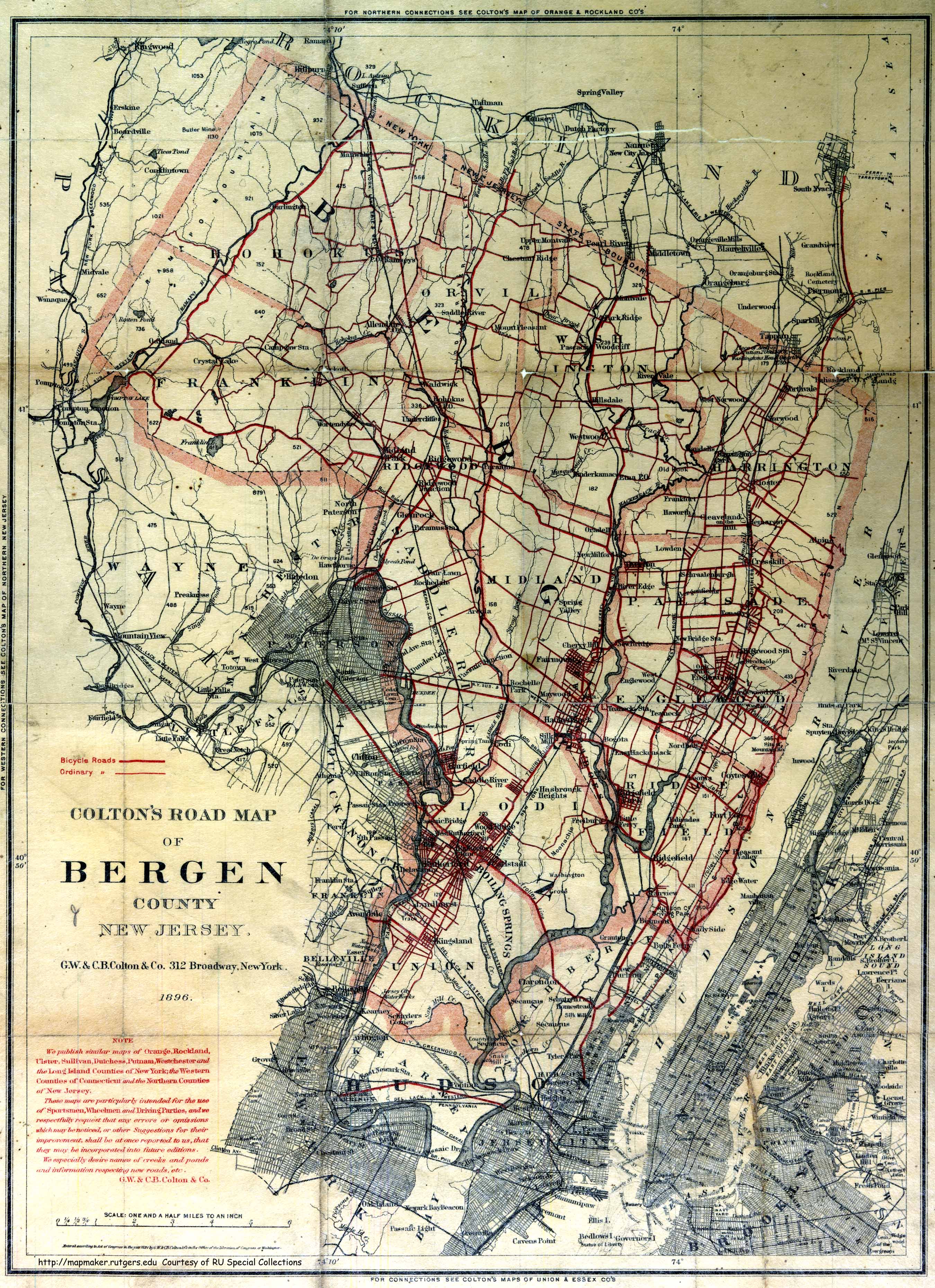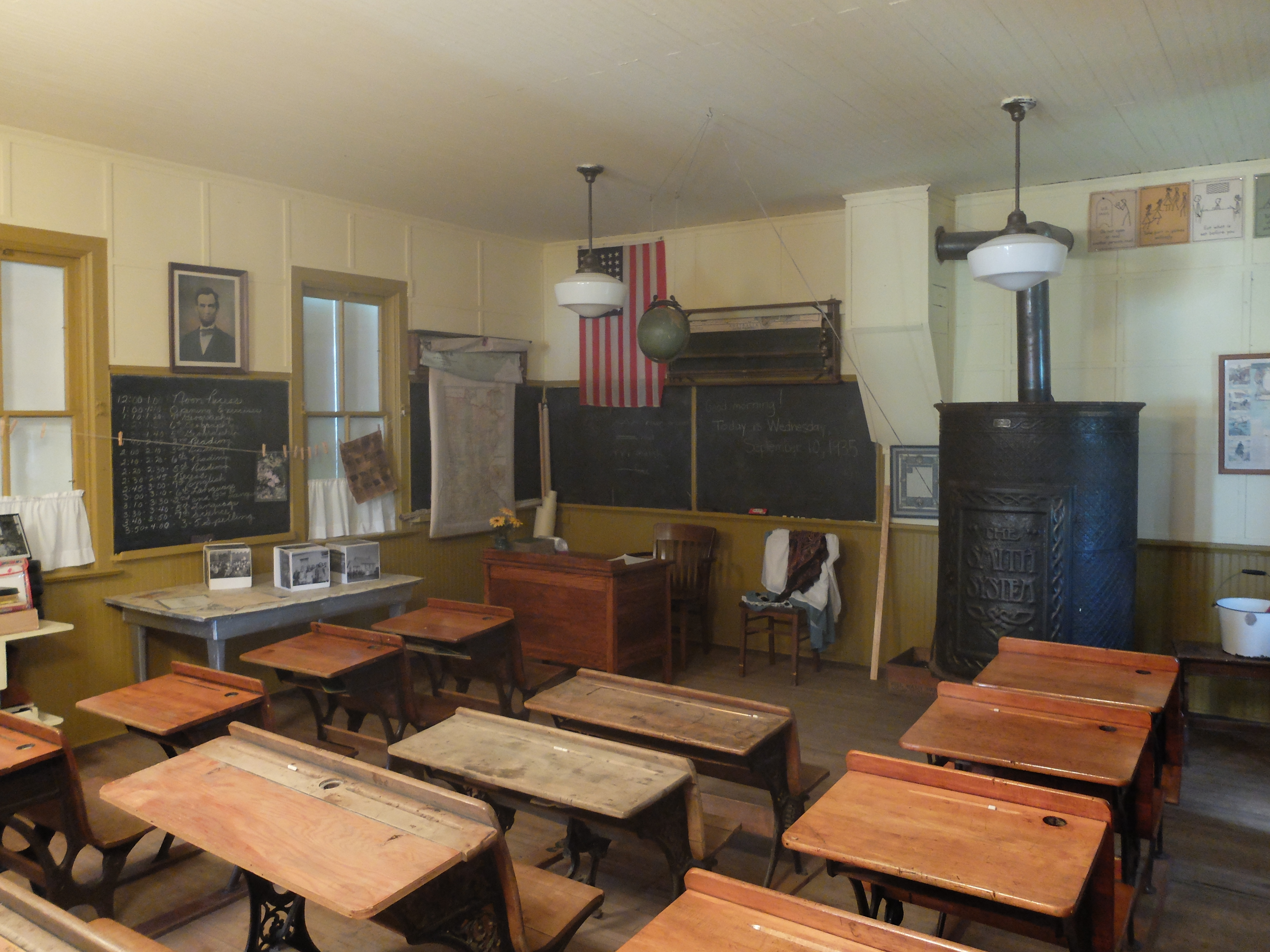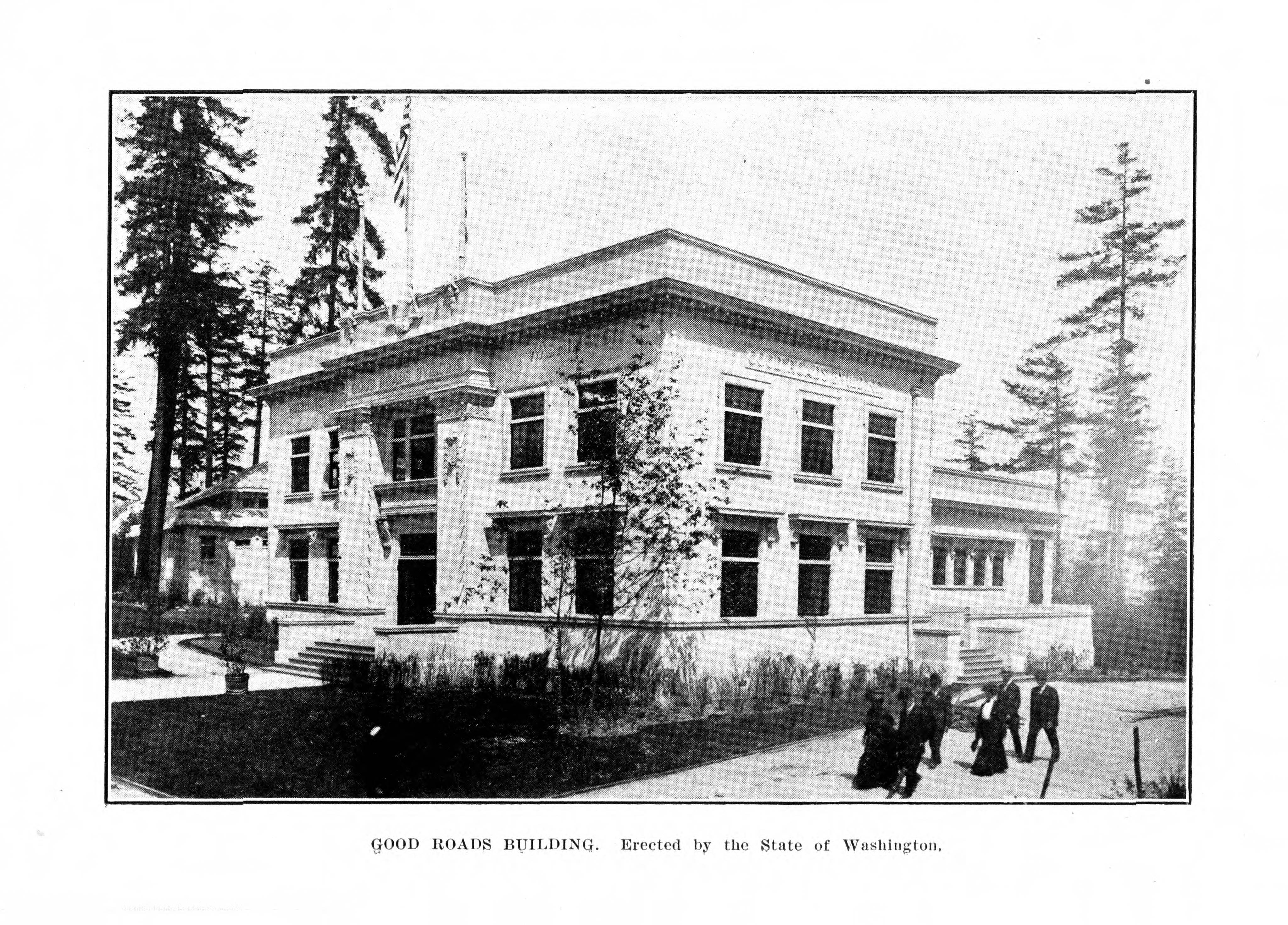|
Boroughitis
Boroughitis (also borough fever or borough mania) was the creation in the 1890s, usually by referendum, of large numbers of small boroughs in the U.S. state of New Jersey, particularly in Bergen County. Attempts by the New Jersey Legislature to reform local government and school systems led to the breakup of most of Bergen County's townships into small boroughs, which still balkanize the state's political map. This occurred following the development of commuter suburbs in New Jersey, residents of which wanted more government services, whereas the long-time rural population feared the increases in taxation that would result. In the late 19th century, much of New Jersey was divided into large townships. In Bergen County, several of these townships contained multiple commuter suburbs, often formed around railroad stations. Political disputes arose between the growing number of commuters, who wanted more government services for the new developments near railroad lines, and long-ti ... [...More Info...] [...Related Items...] OR: [Wikipedia] [Google] [Baidu] |
Borough (New Jersey)
A borough (also spelled boro), in the context of local government in the U.S. state of New Jersey, refers to one of five ''types'' and one of eleven ''forms'' of municipal government (in addition to those established under a Special Charter). Though it is now the most common form of local government in New Jersey, by 1875 only 17 boroughs had been created, all by special acts of the legislature. These original boroughs were ''subdivisions'' of townships, established by state charter; Elizabeth was the first, established by royal charter in 1740, within the now defunct Elizabeth Township. About half of them had been dissolved, or changed into other forms of government—often cities. In 1875, a constitutional amendment prohibited such local or special legislation.Snyder, pp. 23, 237; Elizabeth, for example, was rechartered by the state in 1789, and became a city in 1855; Trenton had been chartered in 1746 and surrendered its charter in 1750. Legislation The Borough Act of 1878 ... [...More Info...] [...Related Items...] OR: [Wikipedia] [Google] [Baidu] |
Bergen County, New Jersey
Bergen County is the most populous county in the U.S. state of New Jersey.Annual Estimates of the Resident Population: April 1, 2010 to July 1, 2018 - 2018 Population Estimates , United States Census Bureau. Accessed May 17, 2019. As of the 2020 U.S. census, the county's population was 955,732, an increase of 50,616 (5.6%) from the 905,116 residents in the 2010 cen ... [...More Info...] [...Related Items...] OR: [Wikipedia] [Google] [Baidu] |
Bergen County
Bergen County is the most populous county in the U.S. state of New Jersey.Annual Estimates of the Resident Population: April 1, 2010 to July 1, 2018 - 2018 Population Estimates , . Accessed May 17, 2019. As of the 2020 U.S. census, the county's population was 955,732, an increase of 50,616 (5.6%) from the 905,116 residents in the [...More Info...] [...Related Items...] OR: [Wikipedia] [Google] [Baidu] |
Bergen County, NJ Municipalities Labeled
Bergen (), historically Bjørgvin, is a city and municipality in Vestland county on the west coast of Norway. , its population is roughly 285,900. Bergen is the second-largest city in Norway. The municipality covers and is on the peninsula of Bergenshalvøyen. The city centre and northern neighbourhoods are on Byfjorden, 'the city fjord', and the city is surrounded by mountains; Bergen is known as the "city of seven mountains". Many of the extra-municipal suburbs are on islands. Bergen is the administrative centre of Vestland county. The city consists of eight boroughs: Arna, Bergenhus, Fana, Fyllingsdalen, Laksevåg, Ytrebygda, Årstad, and Åsane. Trading in Bergen may have started as early as the 1020s. According to tradition, the city was founded in 1070 by King Olav Kyrre and was named Bjørgvin, 'the green meadow among the mountains'. It served as Norway's capital in the 13th century, and from the end of the 13th century became a bureau city of the Hanseatic Lea ... [...More Info...] [...Related Items...] OR: [Wikipedia] [Google] [Baidu] |
Essex County, New Jersey
Essex County is located in the northeastern part of New Jersey. As of the 2020 U.S. census, the county's population was 863,728, making it the state's second-most populous county, behind Bergen and Middlesex Counties.Annual and Cumulative Estimates of Resident Population Change for Counties in New Jersey and County Rankings: April 1, 2020 to July 1, 2021 . Accessed June 1, 2022. Its |
Camden County, New Jersey
Camden County is a county located in the U.S. state of New Jersey. As of the 2020 U.S. census, the county's population was 523,485, an increase of 9,828 (1.9%) from the 2010 census, making it the state's 8th-largest county. Its county seat is Camden.New Jersey County Map , New Jersey Department of State. Accessed July 10, 2017. The most populous place was Cherry Hill with 74,553 residents at the time of the 2020 Census, while Winslow Township covered , the largest t ... [...More Info...] [...Related Items...] OR: [Wikipedia] [Google] [Baidu] |
Union County, New Jersey
Union County is a county in the northern part of the U.S. state of New Jersey. As of the 2020 U.S. census, the county's population was 575,345, making it the seventh-most populous of New Jersey's 21 counties. Its county seat is Elizabeth.New Jersey County Map . Accessed July 10, 2017. In 2015, the county had a per capita personal income of $60,089, the seventh-highest in New Jersey and ranked 152nd of 3,113 counties in the United States. The [...More Info...] [...Related Items...] OR: [Wikipedia] [Google] [Baidu] |
One-room Schoolhouse
One-room schools, or schoolhouses, were commonplace throughout rural portions of various countries, including Prussia, Norway, Sweden, the United States, Canada, Australia, New Zealand, the United Kingdom, Ireland, and Spain. In most rural and small town schools, all of the students met in a single room. There, a single teacher taught academic basics to several grade levels of elementary-age children. While in many areas one-room schools are no longer used, some remain in developing nations and rural or remote areas. In the United States, the concept of a "little red schoolhouse" is a stirring one, and historic one-room schoolhouses have widely been preserved and are celebrated as symbols of frontier values and of local and national development. When necessary, the schools were enlarged or replaced with two-room schools. More than 200 are listed on the U.S. National Register of Historic Places. In Norway, by contrast, one-room schools were viewed more as impositions upon con ... [...More Info...] [...Related Items...] OR: [Wikipedia] [Google] [Baidu] |
Franklin Township, Bergen County, New Jersey
Franklin Township was a township that existed in Bergen County, New Jersey, United States from 1771 until 1926. Franklin Township was established by Royal Charter on June 1, 1771, when Saddle River Township was subdivided."The Story of New Jersey's Civil Boundaries: 1606-1968", John P. Snyder, Bureau of Geology and Topography; Trenton, New Jersey; 1969. p. 78. The Township was named after the colonial-era Governor of New Jersey William Franklin, the illegitimate son of Benjamin Franklin. By 1755, about 100 families lived in the Franklin Township area. Pompton Township was formed from portions of the township on April 10, 1797, ultimately becoming part of Passaic County when it was created on February 7, 1837. On April 9, 1849, Hohokus Township was created from the northern part of Franklin Township and extended from the Saddle River on the east to the western boundary of Bergen County with Passaic County and north to the New York border. On March 30, 1876, Ridgewood Township ... [...More Info...] [...Related Items...] OR: [Wikipedia] [Google] [Baidu] |
Good Roads Movement
The Good Roads Movement occurred in the United States between the late 1870s and the 1920s. It was the rural dimension of the Progressive movement. A key player was the United States Post Office Department. Once a commitment was made for Rural Free Delivery of the mail, the Post Office had to determine which local roads were suitable and which were not. Farmers living on officially unusable roads now had motivation to get them upgraded. Advocates for improved roads turned local agitation into a national political movement. It started as a coalition between farmers' organizations groups and bicyclists' organizations, such as the League of American Wheelmen. The goal was state and federal spending to improve rural roads. By 1910, automobile lobbies such as the American Automobile Association joined the campaign, coordinated by the National Good Roads Association. Outside cities, roads were dirt or gravel; mud in the winter and dust in the summer. Travel was slow and expensive. Ea ... [...More Info...] [...Related Items...] OR: [Wikipedia] [Google] [Baidu] |
Orange, New Jersey
The City of Orange is a Township (New Jersey), township in Essex County, New Jersey, Essex County, in the U.S. state of New Jersey. As of the 2010 United States census, 2010 U.S. census, the township's population was 30,134, reflecting a decline of 2,734 (−8.3%) from the 32,868 counted in 2000 United States Census, 2000. Orange was originally incorporated as a township (New Jersey), township by an act of the New Jersey Legislature on November 27, 1806, from portions of Newark, New Jersey, Newark Township. Portions of the township were taken on April 14, 1834, to form the now-defunct Clinton Township, Essex County, New Jersey (Historical), Clinton Township. On January 31, 1860, Orange was reincorporated as a town (New Jersey), town. Portions of the town were taken to form South Orange Township (April 1, 1861, now known as Maplewood, New Jersey, Maplewood), Fairmount Township, New Jersey, Fairmount (March 11, 1862, now part of West Orange), East Orange, New Jersey, East Orange To ... [...More Info...] [...Related Items...] OR: [Wikipedia] [Google] [Baidu] |
Brick Church (NJT Station)
Brick Church is an active commuter railroad station in the city of East Orange, Essex County, New Jersey. The station, one of two in East Orange, is located next to the Temple of Unified Christians Brick Church, designed with brick architecture. The other station, located to the east, is the namesake East Orange stop. Trains from the station head east on New Jersey Transit's Morristown Line and Gladstone Branch to New York Penn Station and Hoboken Terminal while westbound trains service stops out to Gladstone and Hackettstown. Like its sister station, Brick Church contains three tracks and two platforms (a side platform and an island platform). However, it is not accessible for the handicapped. Railroad service through East Orange began with the opening of the Morris and Essex Railroad on November 19, 1836 to Orange. The railroad stopped at the residence of local attorney Matthias Ogden Halsted each day for him to commute. He soon provided a station for commuters to use ... [...More Info...] [...Related Items...] OR: [Wikipedia] [Google] [Baidu] |






